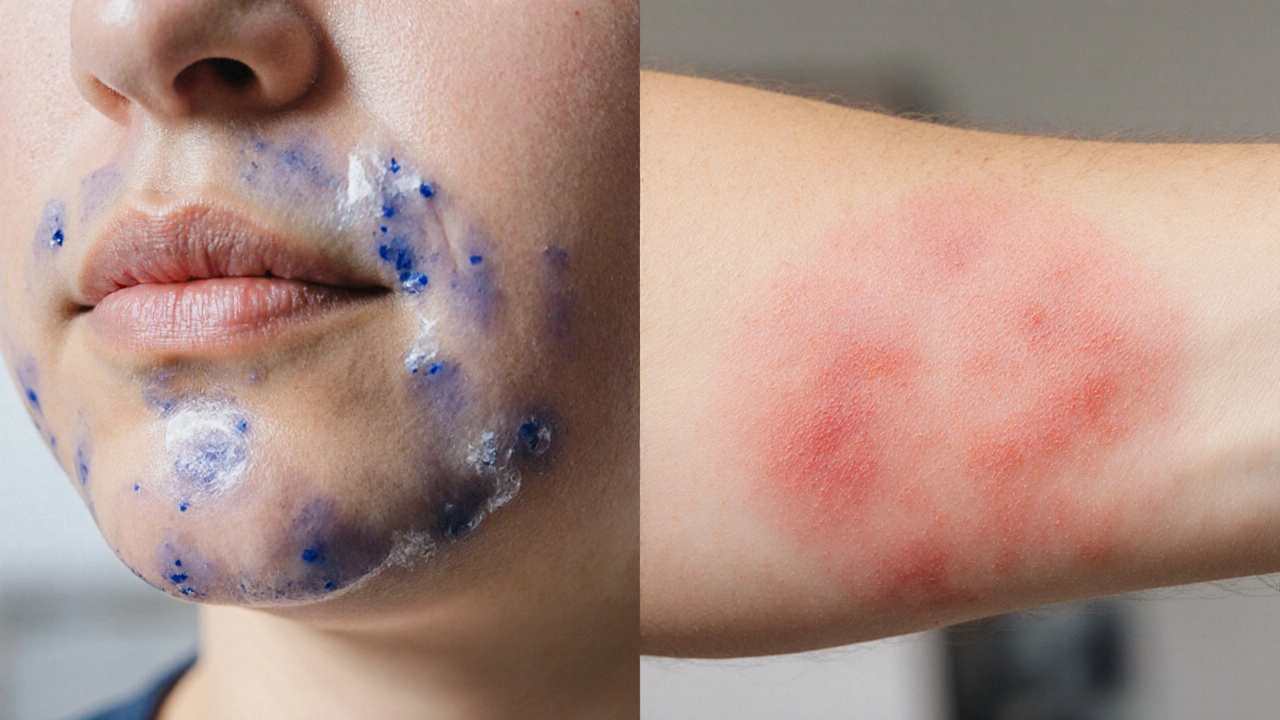Understanding angioedema: What It Is and How to Manage It
When dealing with Angioedema, a rapid swelling of the deeper layers of skin and mucous membranes often triggered by allergens, medications, or genetic factors. Also known as swelling, it can appear on the face, lips, throat, or even the intestines, and can be life‑threatening if the airway closes.
One of the most common Allergic reaction, the body’s over‑reactive immune response to substances like foods, insect stings, or latex that releases histamine and other chemicals. When histamine floods the tissue, it pulls fluid into the surrounding area, creating the characteristic puffiness of angioedema. Recognizing that link helps you choose the right antihistamine or steroid to calm the storm.
Another frequent culprit is the class of blood‑pressure meds called ACE inhibitors, drugs that lower blood pressure by blocking the conversion of angiotensin I to angiotensin II. About 0.1‑0.7% of users develop angioedema, often within the first weeks of therapy. If you notice sudden lip or tongue swelling after starting an ACE inhibitor, stopping the drug and seeking medical help can prevent a dangerous escalation.
Not every case is drug‑induced. Hereditary angioedema, a rare genetic disorder caused by deficient or dysfunctional C1‑esterase inhibitor leads to recurrent, often severe swelling episodes without any allergic trigger. Unlike ordinary angioedema, antihistamines and steroids usually don’t work, and patients need specific treatments like C1‑esterase replacement or bradykinin‑targeting drugs.
Key Factors to Watch When Angioedema Strikes
First, identify the trigger. Ask yourself: have you eaten something new, started a medication, or experienced stress? Second, gauge severity. Minor lip swelling may resolve with an over‑the‑counter antihistamine, but throat tightening, voice changes, or difficulty breathing demand immediate emergency care. Third, consider your medical history—if you have hereditary angioedema, keep your prescribed rescue medication on hand.
Fourth, think about medication interactions. Many posts on our site compare drugs that could either provoke or treat swelling. For example, a guide on Prograf vs. alternatives explains how immunosuppressants influence immune response, while a review of Ketorolac vs. common pain relievers highlights NSAID‑related swelling risks. Understanding these nuances helps you avoid a drug that might worsen angioedema.
Fifth, lifestyle tweaks can lower risk. Staying hydrated, avoiding alcohol in excess, and keeping a food diary can reveal hidden allergens. Simple changes like switching to a low‑histamine diet often reduce the frequency of mild episodes.
Sixth, emergency preparedness matters. Keep an epinephrine auto‑injector if you’ve had severe reactions before, and train family members to recognize signs of airway compromise. Even though epinephrine isn’t a first‑line treatment for angioedema without anaphylaxis, it can buy critical minutes if the swelling threatens breathing.
Seventh, regular follow‑up with a healthcare provider ensures you get the right long‑term plan. For hereditary cases, periodic C1‑esterase level checks and adjustments to prophylactic therapy keep attacks at bay. For medication‑induced forms, a simple switch to an ARB (angiotensin‑II receptor blocker) often eliminates the problem without sacrificing blood‑pressure control.
Eighth, keep track of any co‑existing conditions. People with asthma, for instance, may experience both bronchoconstriction and facial swelling during an allergic flare. A combined approach that addresses both airway and skin can prevent a cascade of symptoms.
Ninth, educate yourself on the latest treatment options. New oral kallikrein inhibitors and monoclonal antibodies are entering the market, offering alternatives to traditional intravenous therapies. Our post on Dapasmart vs. other diabetes drugs illustrates how to compare efficacy, safety, and cost—skills you can apply when weighing angioedema therapies too.
Tenth, remember that not every swelling is angioedema. Cellulitis, dental infections, or even simple bruising can look similar. A quick check for redness, warmth, or fever helps differentiate an infection that needs antibiotics from an allergic swelling that responds to antihistamines.
By weaving together knowledge of triggers, medication interactions, and emergency steps, you can turn a scary swelling episode into a manageable event. Below you’ll find a curated collection of articles that dive deeper into specific drugs, diets, and conditions that intersect with angioedema. Whether you’re looking for a side‑by‑side comparison of pain relievers, a guide to low‑FODMAP diet benefits, or tips on safe online pharmacy purchases, the posts ahead give you practical tools to stay ahead of swelling.

Angioedema vs. Hives: Key Differences and How to Manage Them
Haig Sandavol Oct 3 17Learn the key differences between angioedema and hives, their causes, symptoms, treatment options, and when to seek emergency care.
More Detail